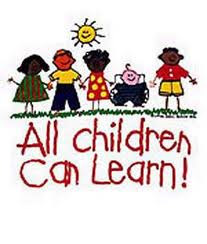
Special Education

Topics Discussed on this Page:
History of Special Education
Disability Areas
Assessment Procedure
Development of an IEP
Teaching Methodology for Exceptional Children
Explanation of Parental Rights
Support Links for Parents of Children with Disabilities
|
The History of Special Education
The Grassroots Advocacy The history of special education in the U.S. began after World War II, when a number of parent-organized advocacy groups surfaced. One of the first organizations was the American Association on Mental Deficiency, which held its first convention in 1947. By the early 1950s, fueled by the Civil Rights Movement, a number of other parent organizations were formed, including the United Cerebral Palsy Association, the Muscular Dystrophy Association, and John F. Kennedy’s Panel on Mental Retardation. During the 1960’s, an increasing level of school access was established for children with disabilities at the state and local levels. The Resulting Legislation This groundswell of
grassroots advocacy led to the more recent
history of special education in America, which
commenced with Congressional approval of the
“Education for All Handicapped Children Act”
(Public Law 94-142) on November 29, 1975. This
law was intended to support states and
localities in “protecting the rights of, meeting
the individual needs of, and improving the
results for infants, toddlers, children and
youths with disabilities and their families.”
After the adoption of enabling regulations, PL
94-142 went effective in October 1977, becoming
the legislative foundation for federal funding
of special education. PL 94-142 is also known as the IDEA, Individuals w/Disabilities Education Act. There are 6 major principles to the IDEA that you may have read about above and that have remained basically unchanged. I will briefly describe each of them. They are: Zero Reject: Schools must education all children with disabilities regardless of the nature or severity of the disability; no child with disabilities may be excluded from a free public education. Nondiscriminatory Identification & Evaluation: Schools must use nonbiased, multi-factored methods of evaluation to determine whether a child has a disability and, if so, whether the child needs special education. The evaluation procedures must not discriminate on the basis of race, culture, or native language. All tests must be administered in the child's native language. Free Appropriate Public Education: All children with disabilities, regardless of type or severity, shall receive a free appropriate public education (FAPE). This must be provided at the public expense-without cost to the child's parents. An IEP must be developed and implemented to meet the unique needs of each student with a disability (I will discuss IEP in more depth shortly). Least Restrictive Environment: IDEA mandates that students with disabilities be educated w/children without disabilities to the maximum extent appropriate and that students w/disabilities be removed to separate classes or schools only when the nature or severity of their disabilities is such that they cannot receive an appropriate education in a general education classroom w/ supplementary aids and services. Due Process Safeguards: This protects the rights of the child and the parents. Parental consent must be obtained for initial and all subsequent evaluations and placement decisions regarding special education . The school must maintain the confidentiality of all records pertaining to a child with disabilities and make those records available to the parents. Parent and Student Participation and Shared Decision Making: Schools must collaborate with parents and students with disabilities in the planning and implementation of special education and related services.
The Ultimate Impact
Before the IDEA, the history of special education in America was pretty bleak. In fact, many children with disabilities were denied access to public education altogether. For example, in 1970, U.S. schools educated only one in five children with disabilities, and many states had laws that excluded children with major disabilities such as deafness, blindness, and mental retardation. Today, the IDEA is considered responsible for providing special education opportunities to more than 6.5 million children and 200,000 infants, toddlers, and families each year. (Source: http://www.learningrx.com/history-of-special-education.htm) |

Disability Areas
|
Intellectual Disabilities
(Mental Retardation) -
A disability characterized
by significant limitations in both intellectual
functioning and adaptive behavior as expressed
in conceptual, social, and practical adaptive
skills; the disability originates before age 18.
Refers to the same population of individuals who
were diagnosed previously with mental
retardation. Learning Disabilities - A general term that refers to a heterogeneous group of disorders manifested by significant difficulties in the acquisition and use of listening, speaking, reading, writing, reasoning, or mathematical abilities. Emotional or Behavioral Disorders - A disability characterized by emotional or behavioral responses in school programs so different from appropriate age, cultural, or ethnic norms that the responses adversely affect educational performance; more that a temporary, expected response to stressful events in the environment; consistently exhibited in two different settings, at least one of which is school-related; and unresponsive to direct intervention in general education, or the condition of the child is such that general education interventions would be insufficient. Autism-A pervasive developmental disorder marked by three defining features with onset before age 3: (a) impairment of social interactions; (b) impairment of communication; and (c) restricted, repetitive, and stereotyped patterns of behavior, interests, and activities. Speech or Language Impairments - A communication disorder such as stuttering, impaired articulation, language impairment, or a voice impairment that adversely affects a child's educational performance. Hearing Impairments - A hearing loss significant enough to require special education, training, and/or adaptations; includes deafness as well as hard-of-hearing conditions. Visual Impairments - An impairment in vision that, even with correction, adversely affects a child's educational performance. The term includes both partial sight and blindness. Physical or Health Impairments - Having limited strength, vitality, or alertness due to chronic or acute health problems such as a heart condition, rheumatic fever, asthma, hemophilia, and leukemia, which adversely affect educational performance. Traumatic Brain Injury - An acquired injury to the brain caused by an external physical force, resulting in total or partial functional disability, psychosocial impairments, or both that adversely affect a child's educational performance. Multiple Disabilities-Two or more disabilities in the same person; defined as a disability category in the IDEA as "concomitant impairments, the combination of which causes such sever educational needs that they cannot be accommodated in special education programs solely for one of the impairments." Giftedness and Special Talents - A child who excels in multiple levels and areas of education |

|